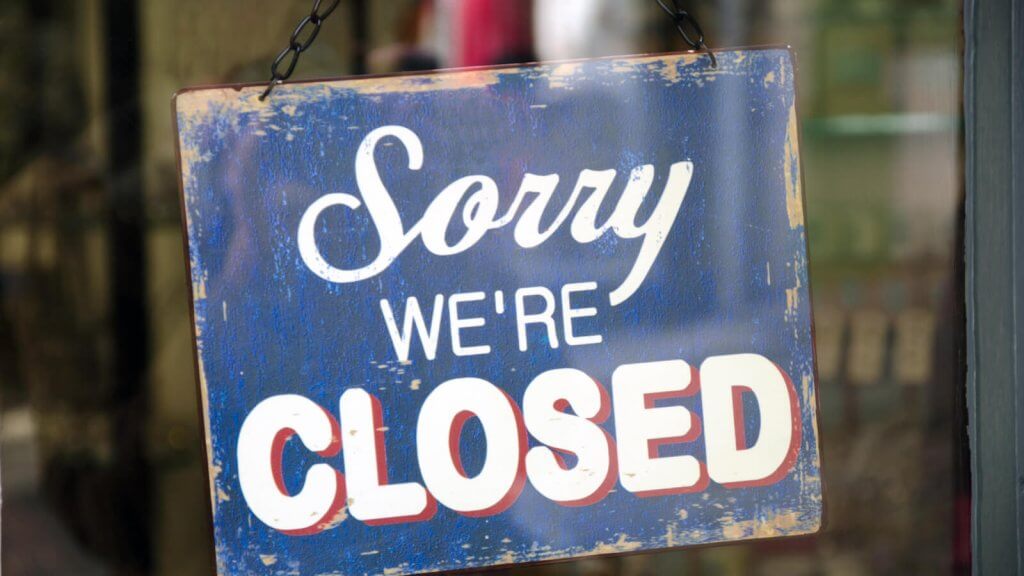Before we go in-depth to deleting your shop, here are the official Etsy resources for deleting your account if you’re in a hurry: Permanently Delete Etsy Account | How to Close Your Etsy Account
Running an Etsy shop can be a rewarding experience for creative entrepreneurs, allowing them to showcase their unique products to a global audience. However, there may come a time when you need to consider deleting your Etsy shop. Whether it’s due to changing business goals, personal circumstances, or other reasons, closing your online store is a significant decision that requires careful thought and consideration.
Before taking any action, it is crucial to recognize the importance of making a well-thought-out decision regarding the closure of your Etsy shop. Deleting your shop means permanently ending your presence on the platform and severing ties with your customer base. Therefore, taking the time to evaluate your options and consider the implications is essential.
Closing your Etsy shop should not be a hasty or impulsive decision. It is crucial to assess the reasons behind your choice and ensure that it aligns with your long-term goals and vision. Careful consideration allows you to weigh the potential consequences and explore alternative solutions that might better suit your needs.
Considerations Before Deleting Your Etsy Shop
Before proceeding with deleting your Etsy shop, there are several factors you should consider:
- Financial Implications: Evaluate the financial impact of closing your shop, including potential loss of income, outstanding payments, and any costs associated with termination or relocation.
- Future Plans: Determine if closing your Etsy shop aligns with your future plans and aspirations. Consider alternative platforms or avenues for selling your products and how they may better suit your goals.
- Customer Relationships: Assess the impact on your existing customer relationships and their expectations. Consider how you will communicate the closure to your customers and if there are alternative sources or channels you can recommend to them.
- Inventory and Supplies: Determine how you will handle any remaining inventory or supplies. Consider whether you will sell, donate, or repurpose them.
- Legal Obligations: Review any legal obligations, such as contracts or agreements with suppliers, manufacturers, or other third parties. Ensure that you fulfill any outstanding commitments before closing your shop.
Assessing the Need to Close Your Etsy Shop
Identifying Reasons for Closure
Before proceeding with the closure of your Etsy shop, it is essential to identify and clearly understand the reasons behind your decision. This will help you assess whether closing your shop is the most appropriate course of action. Some common reasons for closing an Etsy shop include:
- Change in Business Focus: You may have decided to shift your focus to a different product line, industry, or business model that no longer aligns with your current Etsy shop.
- Personal Circumstances: Life events such as relocation, family responsibilities, or health issues may require you to prioritize other aspects of your life and discontinue your Etsy shop.
- Financial Considerations: If your Etsy shop is no longer generating sufficient income to sustain your business or meet your financial goals, closing the shop might be a necessary decision.
- Time Constraints: Running an Etsy shop can be time-consuming, and if you find yourself struggling to balance other commitments or unable to dedicate adequate time to your shop, closing it might be a viable option.
- Creative Direction: You might feel a need for a fresh start, exploring new creative endeavors, or pursuing alternative platforms that better suit your artistic vision.
Evaluating Alternatives and Potential Solutions
Once you have identified the reasons for closing your Etsy shop, it’s important to consider alternative solutions that may address your concerns without completely deleting your shop. Explore the following options:
- Temporary Closure: If your reasons for closing are temporary, consider temporarily deactivating your shop rather than permanently deleting it. This allows you to take a break and reassess your options without losing your shop’s presence and data.
- Platform Migration: Explore alternative e-commerce platforms or marketplaces that might better align with your needs and business goals. Research and compare features, fees, and target audience to make an informed decision.
- Local or Wholesale Opportunities: Consider transitioning to local markets, craft fairs, or wholesale opportunities where you can showcase your products and reach a different customer base.
- Collaborations or Partnerships: Explore collaborations with other artists, designers, or businesses to expand your reach and tap into new markets while sharing resources and responsibilities.
It is important to approach the process of deleting your shop thoughtfully to ensure a smooth transition and maintain a positive reputation within the Etsy community.
Weighing the Pros and Cons of Closing
Before finalizing your decision to delete your Etsy shop, it is crucial to weigh the pros and cons associated with closing. Consider the following factors:
- Impact on Brand Reputation: Closing your shop abruptly or without proper communication may negatively impact your brand’s reputation. Evaluate how the closure will be perceived by customers and the wider community.
- Financial Considerations: Assess the financial implications of closing your shop, including any potential losses, outstanding payments, and costs associated with termination or transitioning to alternative platforms.
- Emotional Attachment: Take into account your emotional attachment to your Etsy shop and the potential impact of letting go. Consider whether you are ready to move on from this chapter of your business journey.
- Time and Resources: Evaluate the time and resources required to close your shop and any associated tasks, such as customer communication, inventory management, and winding up business accounts.
By thoroughly assessing the need to close your Etsy shop, identifying reasons for closure, exploring alternative solutions, and weighing the pros and cons, you can make an informed decision that aligns with your goals and sets you up for future success.
Preparing for Shop Closure
Managing Existing Orders and Obligations
Before proceeding with closing your Etsy shop, it is crucial to manage any existing orders and fulfill your obligations to customers. Here are some steps to consider:
- Order Fulfillment: Prioritize completing and shipping pending orders in a timely manner. Communicate with customers regarding the status of their orders and provide realistic estimates for delivery.
- Outstanding Obligations: If you have any outstanding obligations or commitments, such as custom orders, subscriptions, or services, communicate with the customers involved and make arrangements to fulfill those obligations before closing your shop.
- Clear Communication: Maintain open and transparent communication with customers regarding any potential delays or changes due to the shop closure. Offer reassurance and provide alternative solutions if applicable.
Communicating with Customers and Addressing Concerns
Effective communication is crucial when closing your Etsy shop to maintain a positive relationship with your customers. Consider the following steps:
- Announcement: Create a thoughtful and informative announcement to notify your customers about the impending closure of your shop. Clearly state the reasons for the closure and provide a timeline for when the shop will be officially closed.
- Shop Announcement Banner: Utilize the shop announcement banner to display a concise message about the shop closure and any important information, such as last order dates, contact details, or recommended alternative sources for your products.
- Email Notifications: Consider sending personalized emails to your existing customers, particularly those with pending orders or ongoing subscriptions. Express your gratitude for their support and inform them about the closure, any impact on their orders, and any necessary actions they may need to take.
- Social Media and Website Updates: Update your social media profiles, personal website, or any other online presence to reflect the shop closure. Provide information about the reasons behind the closure and direct customers to alternative sources or platforms, if applicable.
Resolving Outstanding Issues and Providing Refunds
To maintain your reputation and ensure customer satisfaction, it is important to address any outstanding issues or concerns before closing your shop. Take the following steps:
- Customer Support: Be responsive to customer inquiries and concerns. Address any issues promptly and professionally, providing solutions or options to resolve problems.
- Refunds and Returns: Process any necessary refunds or returns in accordance with Etsy’s policies and your own refund policies. Communicate with customers about the refund process and ensure they are satisfied with the resolution.
- Documentation: Maintain thorough documentation of any customer interactions, refunds, or resolutions to have a record of your efforts to provide excellent customer service even during the shop closure.
By effectively managing existing orders, communicating transparently, and addressing any existing concerns or issues, you can minimize disruptions and maintain a positive reputation as you prepare to close your Etsy shop. It also ensures that your loyal customers feel valued and supported throughout the transition process.
Next, we’ll show you what you should do to ensure you have copies of all your shop data and files.
Steps to Delete Your Etsy Shop
It’s important to follow a systematic process to ensure a smooth closure account closure. Here are the steps we recommend:
Backing up Shop Data and Important Files
Before proceeding with the deletion of your Etsy shop, it is crucial to back up all your shop data and important files. This ensures that you have a copy of vital information for future reference or in case you decide to reopen your shop later. Consider the following actions:
- Download Shop Data: Etsy provides an option to download your shop data, including your listings, sales history, customer information, and other relevant details. Follow Etsy’s guidelines to initiate and complete the data download process.
- Save Important Files: Make sure to save copies of essential files related to your shop, such as product photos, branding materials, marketing assets, and any legal or financial documents. Store these files securely on your computer or an external storage device.
Even if your shop is closed, you still may have tax liabilities from the previous year so it is crucial to save all this information to avoid future headaches when tax season comes.
Archiving Listings and Shop Information
Before completely deleting your Etsy shop, it is advisable to archive your listings and shop information. Archiving allows you to retain a record of your products and their details without making them visible to customers. Take the following steps:
- Deactivate Listings: Deactivate all your shop listings individually or in bulk. This action removes them from public view while preserving their details in your Etsy account.
- Shop Announcement and Policies: Update your shop announcement and policies to reflect the closure and inform potential customers that your shop is no longer active. You can include a brief message thanking them for their support and suggesting alternative sources for your products.
Also consider creating Google Doc, PDF copies of the listings or printed versions as a further record. This is useful if in the future you decide to open another Etsy Shop or use another marketplace.
Deactivating the Shop Temporarily
If you are unsure about permanently deleting your Etsy shop, you have the option to temporarily deactivate it. This allows you to take a break and reassess your decision without losing your shop’s presence and data. Follow these steps:
- Visit Shop Settings: Access your Etsy account and navigate to the “Shop Manager” section.
- Open “Settings”: From the left-hand menu, click on “Settings” and select the “Options” tab.
- Deactivate Shop: Scroll down to the “Status” section and click on the “Deactivate Shop” button. Follow the prompts to confirm the deactivation. Your shop will be temporarily closed but still accessible to you.
Initiating the Shop Deletion Process
If you have decided to permanently delete your Etsy shop, follow these steps to initiate the shop deletion process:
- Contact Etsy Support: Reach out to Etsy’s customer support team to inform them about your decision to delete your shop. They can provide guidance and answer any questions or concerns you may have.
- Follow Etsy’s Instructions: Etsy has specific instructions and procedures for deleting a shop. Ensure that you carefully follow their guidelines to avoid any complications. Here are links to their guidelines for closure and deletion:
- Confirm Deletion: Once you have completed the necessary steps, confirm the deletion of your shop as directed by Etsy. Be aware that this action is permanent, and you will not be able to recover your shop or its data once deleted.
Before initiating any deletion it is crucial to make sure that you double check that everything is properly backed up, your listings are archived, and you’ve carefully followed Etsy’s guidelines. You will not be able to recover your data from Etsy after the fact.
After Your Account is Deleted
Once your Etsy shop is deleting, there are several important things to do in order to wrap up your business smoothly. Pay attention to these aspects as it will help you complete the closure process effectively and tie up any remaining loose ends. Here’s what to focus on:
Handling Leftover Inventory and Supplies
More then likely you still have some leftover inventory and supplies from running your business over the years, here’s a few ways you can check what you’ve got remaining and recoup some of the money:
- Inventory Assessment: Take stock of your remaining inventory and evaluate its value and potential usefulness. Determine if there are any items you can repurpose, sell through alternative channels, or donate.
- Selling Remaining Inventory: Consider holding a clearance sale or offering discounted prices to liquidate your remaining inventory. Utilize social media platforms, your personal website, or local marketplaces to reach potential buyers.
- Donation or Disposal: If you have unsold items that are unlikely to be sold, consider donating them to charitable organizations or local community initiatives. Alternatively, ensure proper disposal of any unusable or unsellable inventory.
If you donate the inventory to charity, make sure also to get a receipt from the charity as it could be a future tax deduction.
Disposing of Equipment or Materials
- Equipment Evaluation: Assess any equipment or materials used in your Etsy shop, such as tools, machinery, or packaging supplies. Determine if they hold any value and if they can be repurposed or sold.
- Equipment Sale: If you no longer require certain equipment or materials, consider selling them online, through classified ads, or to other businesses or individuals who may find them useful.
- Proper Disposal: For any equipment or materials that cannot be sold or repurposed, ensure their proper disposal in accordance with local regulations and environmental guidelines.
Informing Customers and Redirecting Them to Alternative Sources
- Customer Notification: Inform your customers about the closure of your Etsy shop through various channels, such as email, social media, or your personal website. Express gratitude for their support and provide them with alternative sources where they can find similar products or suggest complementary businesses they may be interested in.
- Recommendations and Referrals: Consider establishing partnerships or referral programs with other artists or businesses that offer similar products. This allows you to redirect your customers to trusted sources where they can continue to find the products they love.
Closing Business Accounts and Terminating Associated Services
- Financial Accounts: Close any business-specific bank accounts or merchant accounts that are tied to your Etsy shop. Ensure that all outstanding payments, fees, or charges are settled before closing the accounts.
- Subscription Services: Evaluate any subscription services or third-party tools you used for your Etsy shop. Cancel or terminate those services to avoid unnecessary charges.
- Tax Obligations: Fulfill any remaining tax obligations, such as filing sales tax returns or reporting income related to your Etsy shop. Consult with a tax professional to ensure compliance with local tax regulations.
Taking all these post-closure steps ensures a thorough closure process and leaves you with a clean slate for future businesses and other opportunities.
Wrap Up
As you reach the end of this comprehensive guide, it’s clear that closing your online store is a decision that warrants thoughtful consideration. By carefully assessing your reasons, evaluating alternatives, and managing the closure process with transparency and care, you can minimize disruptions and maintain a positive reputation in the Etsy community.



